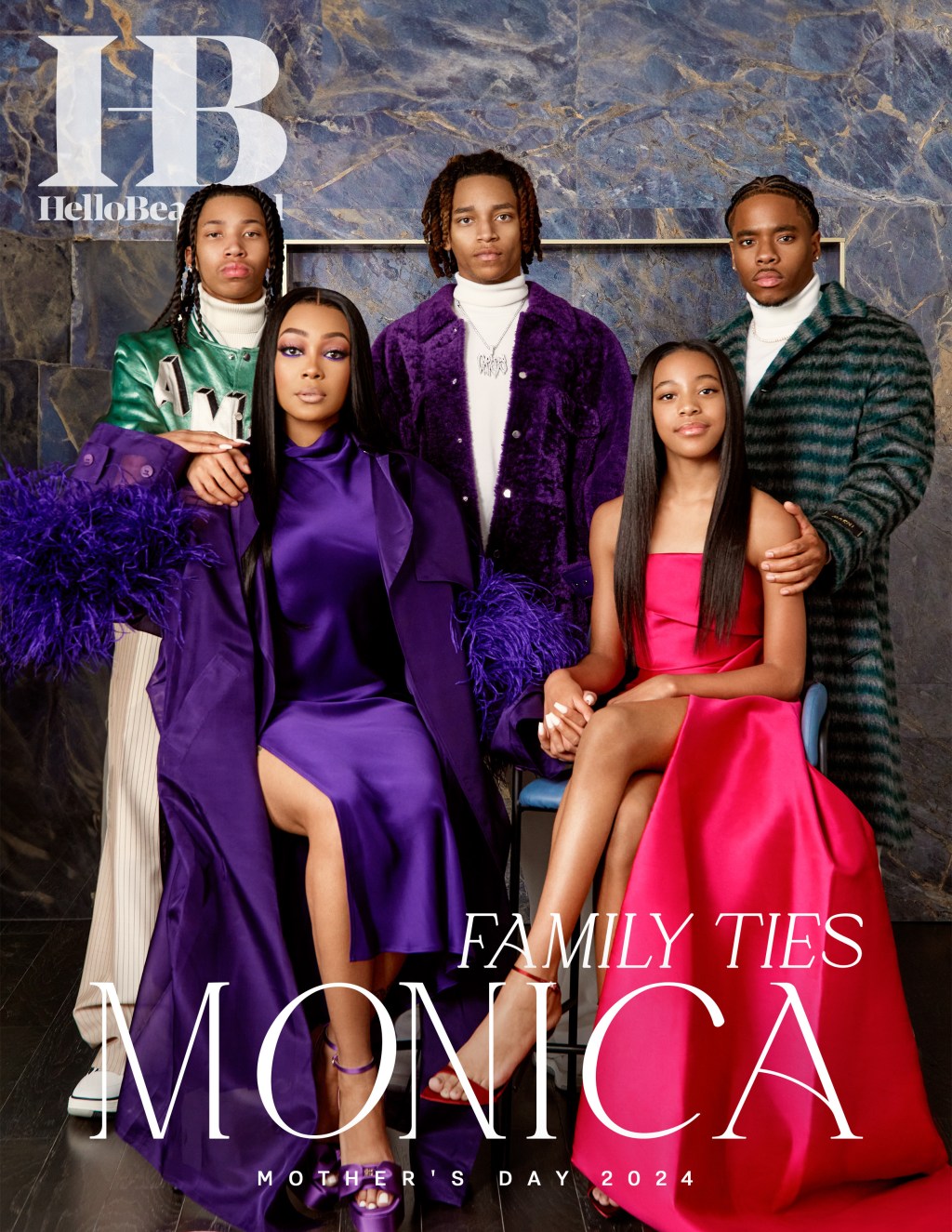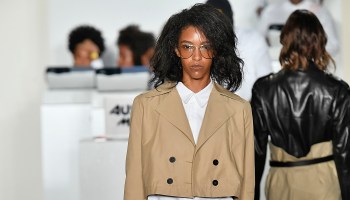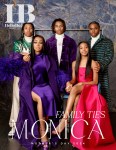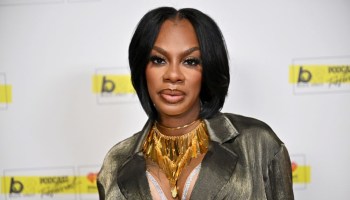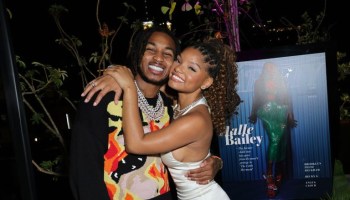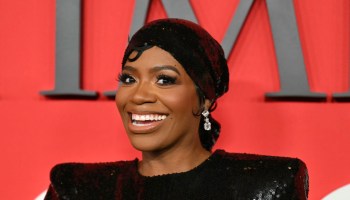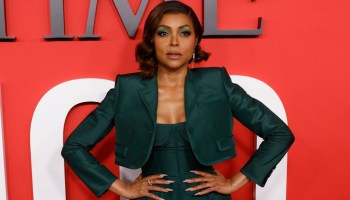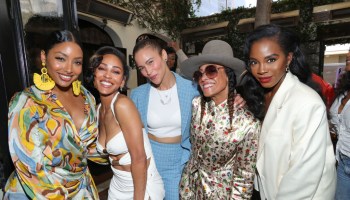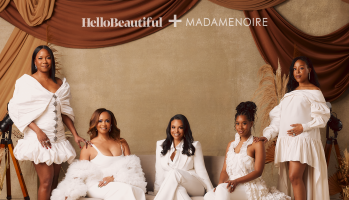The way one dresses can express their heritage, culture, style and so much more. African-print textiles, which were actually inspired by batik or wax-resist cloth from Indonesia, have been used to dress the people of Central and West Africa from the 1800s to present day. From traditional attire to modernized African-inspired dashikis and dresses, the various print designs and range of colors of African textiles have had an influence on the fashion industry.
Fowler Museum at UCLA in Los Angeles recently opened the exhibit, “African-Print Fashion Now! A Story of Taste, Globalization, and Style,” which looks at the history of African prints and contemporary African-print fashion and its influence on global runways.
We spoke with Betsy D. Quick, director of education and curatorial affairs at UCLA and one of the curators of the exhibit, and she said, “One can not underestimate the importance and the extent and the enormous variety and beauty of examples of fashion in Africa and especially those that utilize African-print cloth. It is really a pan West and Central African cloth. There are tens of thousands of patterns and men and women have it tailored into unique fashions for themselves across the continent.”
Quick also explained the origin of African textiles. “One of the things that differentiates African prints from other textiles in Africa is that they are factory manufactured. They are a special category of manufactured cotton textiles. Their origins are actually traceable to the painted and block printed cottons that were produced in India for the Indian Ocean trade as early as the 4th century. By the 11th century, these block printed cloths from India had inspired the development of hand printed wax-resist batiks in Java. So they are commercially manufactured batiks in essence.”
Those African-print wax-resist textiles have stood the test of time across generations throughout Central and West Africa, and has been used to signify status, religion and much more. In the ‘70s, African-inspired clothing was worn as a symbol of Black pride during the “Black Power” movement. “We could look at one design, the Angelina design, which was the name of a cloth designed by the Dutch company Vlisco in 1963 and it quickly became known as dashiki,” said Quick. “It was the cloth worn by many African Americans in the 1970s as very much a gesture of Afrocentric pride and pan-African pride. It was a shirt often worn by men with an embroidery pattern at the neck. It was very popular in the States in the ‘70s and then it sort of faded away a little bit both in the United States and Africa.”
In recent years, colorful dashikis and African-inspired headwraps and dresses have become popular among Black Americans and many more. “In just the last couple of years, Vlisco re-issued the cloth and then of course the Chinese copied it in every color imaginable and it is now hugely popular in West and Central Africa,” said Quick. “It is now being used by designers in Africa and by local seamstresses on the continent. It was also the cloth that a young high school student in New Jersey chose for a prom dress. Her name is Kyemah Mcentyre and she became all the rage on [social media] when she posted a selfie of herself in her red Angelina prom dress and that caused a trend of Afrocentric prom dresses.”
https://www.instagram.com/p/4F41g_F9mD/
And when it comes to fashion designers, they have also been influenced by African prints. “In the last 10 years, African designers have also been using the print and it appears they are showing their work in fashion shows in London, Paris, New York, Shanghai, Dakar, Johannesburg and more,” said Quick.
We also had the opportunity to speak with Elizabeth Way, assistant curator at The Museum at FIT, who said, “Black Fashion Designers [an exhibit at the Museum at FIT on the history of Black fashion designers from the Civil Rights movement to present day which ends May 16] features contemporary ensembles by Christie Brown, Lisa Folawiyo, and Stella Jean. All of these designers regularly incorporate their own variations of African textile traditions into their work.”
Way also gave specific examples. “Lisa Folawiyo, based in Lagos, was inspired by the Ankara prints of Nigeria for the spring 2015 dress on view in Black Fashion Designers. Aisha Ayensu, the designer of Accra-based Christie Brown, looked to the Dutch wax prints she associates with special occasion wear in Ghana for her spring 2016 design. Both designers modernized the traditional textiles of their own cultures to create fashion-forward designs. Italian designer Stella Jean worked with the Ethical Fashion Initiative to commission her fall 2015 ensemble’s fabrics from textile artisans in Burkina Faso.”
So what does this mean for the future of fashion and its connection to African prints? “Talented designers from Africa are gaining more and more international attention, including the ones mentioned above,” explained Way. “Amaka Osakwe of Maki Oh, another designer featured in Black Fashion Designers, for example was a finalist for the LVMH fashion award in 2014. These and other designers are helping to build sustainable fashion industries in their own countries which will enable more and more fashion designers to emerge and gain international visibility.”
“Styles and trends and preferences go back and forth all the time especially today what we call popular fashion, it may be influenced by Western fashion but we also are seeing African designers who are drawing from Western traditions but also from local styles,” Quick added. “So there’s this very fluid exchange of ideas, trends and preferences. I think there is such an appetite for African fashion today, much more so than 10 years ago,” concluded Quick.
If you want to learn more about the African Print Fashion Now! Exhibit at Fowler Museum at UCLA, click here. The exhibit ends on July 30.
DON’T MISS:
TREND REPORT: If You Are Looking To Make A Statement, Invest In A Kimono
GET THE LOOK: Taraji P. Henson Proudly Wears African Designs
TREND REPORT: The 2017 Met Gala Was Red Haute Fashion Mixed With Style You Can Train For
